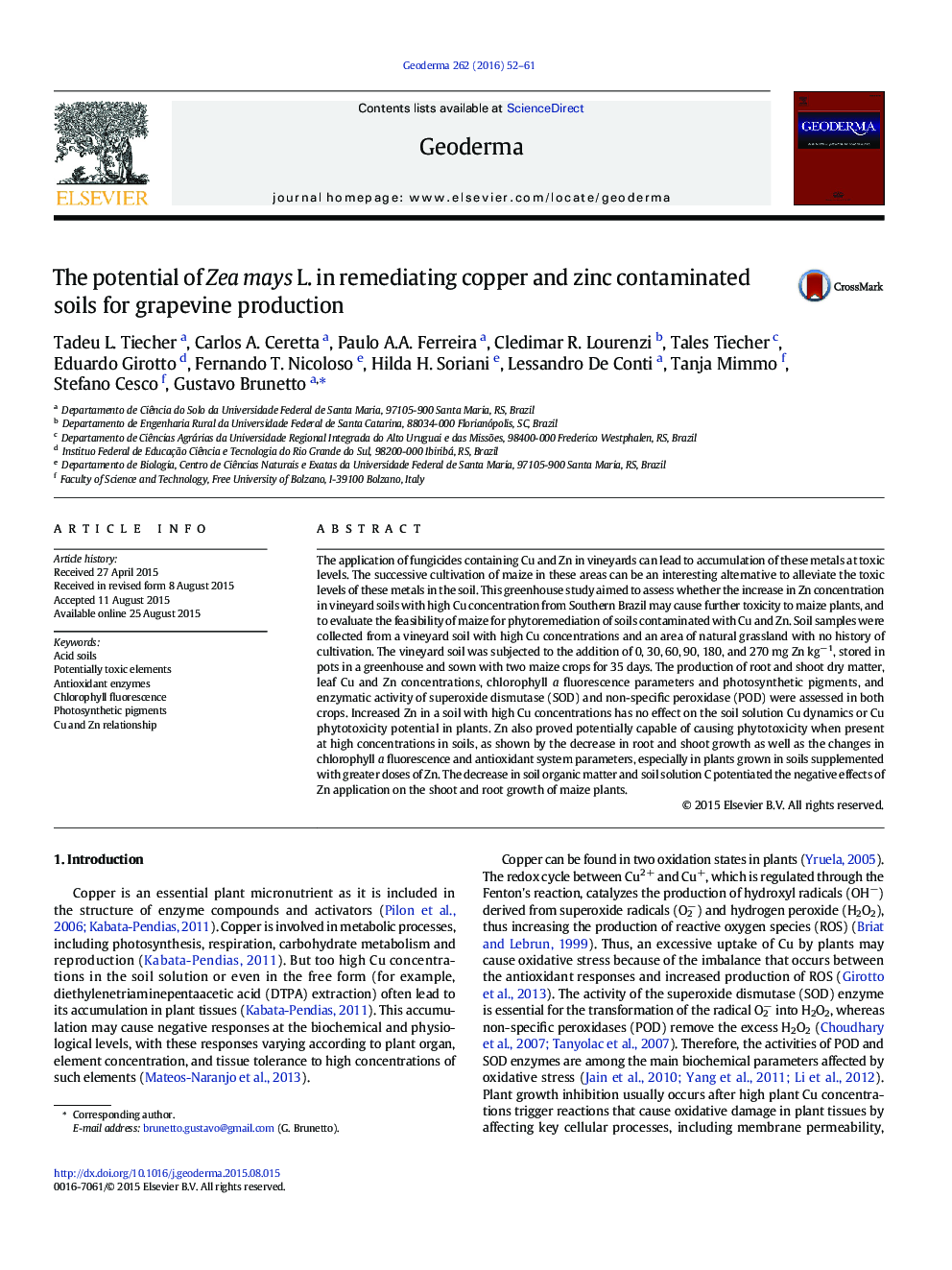| کد مقاله | کد نشریه | سال انتشار | مقاله انگلیسی | نسخه تمام متن |
|---|---|---|---|---|
| 4573048 | 1629454 | 2016 | 10 صفحه PDF | دانلود رایگان |

• Maize could be a valuable alternative for phytoremediation in vineyards soils.
• Zn increase with high Cu levels has no effect on the soil solution Cu dynamics.
• High doses of Zn affected chlorophyll a and antioxidant system parameters.
• High Zn levels in soils contaminated with Cu can be phytotoxic to maize.
The application of fungicides containing Cu and Zn in vineyards can lead to accumulation of these metals at toxic levels. The successive cultivation of maize in these areas can be an interesting alternative to alleviate the toxic levels of these metals in the soil. This greenhouse study aimed to assess whether the increase in Zn concentration in vineyard soils with high Cu concentration from Southern Brazil may cause further toxicity to maize plants, and to evaluate the feasibility of maize for phytoremediation of soils contaminated with Cu and Zn. Soil samples were collected from a vineyard soil with high Cu concentrations and an area of natural grassland with no history of cultivation. The vineyard soil was subjected to the addition of 0, 30, 60, 90, 180, and 270 mg Zn kg− 1, stored in pots in a greenhouse and sown with two maize crops for 35 days. The production of root and shoot dry matter, leaf Cu and Zn concentrations, chlorophyll a fluorescence parameters and photosynthetic pigments, and enzymatic activity of superoxide dismutase (SOD) and non-specific peroxidase (POD) were assessed in both crops. Increased Zn in a soil with high Cu concentrations has no effect on the soil solution Cu dynamics or Cu phytotoxicity potential in plants. Zn also proved potentially capable of causing phytotoxicity when present at high concentrations in soils, as shown by the decrease in root and shoot growth as well as the changes in chlorophyll a fluorescence and antioxidant system parameters, especially in plants grown in soils supplemented with greater doses of Zn. The decrease in soil organic matter and soil solution C potentiated the negative effects of Zn application on the shoot and root growth of maize plants.
Journal: Geoderma - Volume 262, 15 January 2016, Pages 52–61